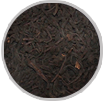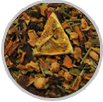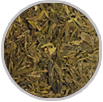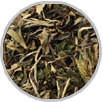
OK, so I know that everyone in the industry seems to think that the only “tea” is from the camellia sinensis shrub, but may I express my vehement denial of this definition?
Dicitionary’s definition: “An evergreen shrub or small tree, camellia sinensis, of tropical and subtropical Asia, having toothed leathery leaves and white fragrant flowers.” It then goes on to say: “A. the dried shredded leaves of this shrub, used to make a beverage by infusion in boiling water”.
I can understand any herbal not really being called a tea because after all, there are no tea leaves from ANY shrub, let alone the camellia sinensis shrub. They are a compilation of herbs, spices, flowers and/or flavoring.
But here’s where I differ from those who cite only the clinical or classic definition of tea.
With the advent of rooibos (please pronounce this properly, folks ‘roy-bus’) to the United States it has taken off, and is found to provide more antioxidants and trace minerals than green tea! Yes, that’s right and you heard it here. Now, if we don’t consider rooibos a ‘tea’ (leaves of the broom-like shrub and said liquor of the shrub) then why do we consider the camellia sinensis assamica and camellia sinensis sinensis tea? Just because it is camellia sinensis? If that’s the case then the Camellia sinensis sinensis shouldn’t be considered a tea because it isn’t used as an ‘infusion beverage’; it is used in creating new cultivars with the other 2 varieties.
If I had my druthers, I would include all plants that use the leaves of a plant that include the liquor of said plant leaves. Again, herbals are not by the strictest definition a tea because there are no leaves of a plant in them.
But rooibos (Redbush) plant uses the leaves for its beverage therefore I consider it a tea!
Let me know your thoughts!













